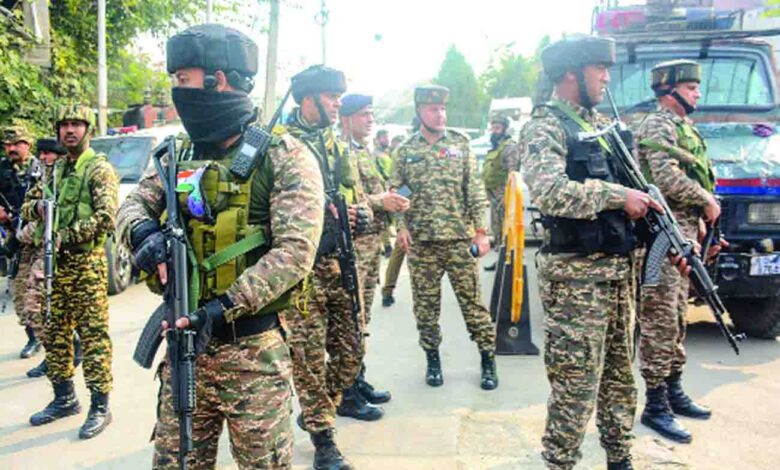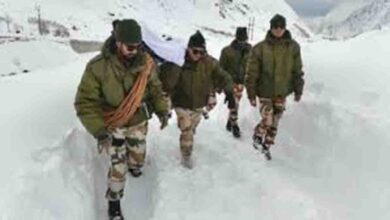Shoot the pig or wrestle? Baisaran will determine India’s world view

GUEST COLUMN
 Ashish Kaul
Ashish Kaul
Imagine a place so stunning it’s dubbed the “Mini Switzerland” of Kashmir—lush meadows, towering pines and peaks kissed by snow. That’s Baisaran, tucked away in Pahalgam, a quiet corner of Kashmir where people go to breathe, not to brace for trouble. But on April 22, trouble crashed the party. Armed terrorists opened fire on a group of tourists, leaving 26 dead and dozens wounded. The news hit like a gut punch—terrorism, again. Yet, as the smoke clears, you can’t help but wonder: there’s more to this than meets the eye. I was raised in that region and know it like the back of my hand. This wasn’t random. Firstly, it was a message to stop Hindu resurgence. It was a message that tourists and not Hindu’s are welcome. Civil society and opinion makers are shocked that religion determined the massacre. I wonder why the shock? Why wasn’t the nation shocked when Kashmiri Hindu’s were massacred directly because of their religion? Is it shocking in 2025 because the question was asked in Hindi and not Kashmiri?
So, let’s unpack it. Why Baisaran? It’s not like Srinagar, buzzing with 20,000 tourists a day, or Gulmarg, pulling in 12,000. It’s a remote meadow, 90 kilometres from Pakistan’s border, far from the Line of Control (LoC) where these things usually flare up. Why go through the hassle of coming deep inside Kashnir valley, so far from the frontline? Picture this: nearly half a dozen guys, loaded with weapons, trudging through rugged mountains, past security posts, all to hit a spot that’s off the beaten path. It’s a head-scratcher—unless you flip the script. What if they didn’t trek in from outside? What if the guns were already there, hidden, waiting?
I don’t believe these armed men made it from Pakistan to Baisaran in a hit active season. The weapons were likely stashed beforehand through a Pakistan covert network. Think about that. Someone local—maybe a guide, a labourer, or even one of the ponywallahs who crisscross those trails—could’ve set it up. The Gujjar-Bakarwals, the nomadic folks who roam the area, didn’t spot anything odd. If a bunch of outsiders had rolled through, you’d think they’d have noticed. So, maybe the attackers weren’t outsiders at all. Maybe they were hiding in plain sight.
Who, then? Fingers are pointing at The Resistance Front (TRF), a Pakistan-linked outfit that’s good at tapping local networks. But this isn’t just a whodunit—it’s a why. Why pick Baisaran over a louder target? Let’s dig in.
First, the lay of the land. Baisaran’s near the Zojila Pass, a lifeline to Ladakh, where India and China have been staring each other down for years. Could this be a wink at Beijing? Security analyst Sushant Sareen thinks it might: “Pakistan could be telling China, ‘Hey, we’ve got India’s attention split.’” It’s a slick move if true—stirring the pot in Kashmir to mess with India’s focus up north. Suddenly, this feels less like a local skirmish and more like a geopolitical jab.
But there’s another layer. Kashmir’s been on an upswing, and it’s driving some folks crazy—in a bad way. After years of chaos, the place is buzzing again. In 2023, 1.88 crore tourists flooded in, dropping Rs 20,000 crore into the economy. By June 2024, 1.2 crore more had shown up, and Amarnath Yatra registrations jumped 30 per cent. New roads, tunnels—like the Zojila one, set to be Asia’s longest—and even a Rs 500 crore luxury mall from Dubai’s Emaar Group are popping up. Kashmir’s not just surviving- it’s thriving.
That’s a nightmare for Pakistan. A peaceful, booming Kashmir doesn’t jive with their whole “endless conflict” vibe. Former R&AW boss AS Dulat put it sharply: “Pakistan’s military lives off hating India. Peace here starves them.” So, what do you do if you’re them? You hit something like Baisaran—a postcard-perfect spot tied to tourism and the Amarnath pilgrimage. It’s not just about bodies; it’s about fear. Scare off the tourists, dent the economy, and remind everyone: don’t get too comfortable.
Then there’s the cultural twist. Kashmir’s Hindu roots are blooming again. Since 2019, 123 temples have been fixed up—like the 1,500-year-old Shiv Lingam in Baramulla, almost lost to land grabbers. Kashmiri Pandits, chased out 30 years ago, are trickling back—5,000 resettled, 20,000 more visiting in 2023. This year, they celebrated Shivratri in the valley, loud and proud, for the first time in decades. That’s huge. Historian Siddiq Wahid hit the nail on the head: “This isn’t about history—it’s about tomorrow. Pakistan’s losing the story.”
So, Baisaran starts looking like a warning. A loud, bloody “not so fast” to Kashmir’s comeback. Hit tourism, rattle the pilgrims, and keep the pot boiling. And here’s the sneaky part: Pakistan can play dumb. Unlike an LoC attack, where India could point fingers and strike back—like after Pulwama in 2019—Baisaran’s too far inland. They can just shrug, “Wasn’t us,” while India fumes. Smart, if you’re into that kind of thing.
The world’s watching, too. The US, Saudi Arabia, Russia—all quick to say “that’s awful.” China? Crickets, just like after Pulwama. With Baisaran close to Ladakh, where they’re already needling India, that silence feels heavy. Are they in on it, or just happy to watch? Either way, it’s a mess for India to untangle.
What’s India supposed to do? Kashmir’s had five decent years—elections, better governance, cash flowing in. But this attack’s already spooked people—tourist bookings are down 15 per cent for next season. Locals who’ve banked on peace are sweating. India could hit back hard, like the Balakot airstrikes, but that’s a gamble. Pakistan’s a mess—40 per cent inflation, $350 billion in debt, begging the IMF again. Push too hard, and it could spiral. Diplomacy’s an option—squeeze them with sanctions—but they’re already broke. Do nothing, though, and you’re asking for round two.
Retired diplomat G Parthasarathy didn’t mince words: “Restraint looks weak. Pakistan gets force.” But force has blowback, and with everyone watching, India’s got to be sharp. One analyst warned, “No strong move, and this won’t be the last time.”
Where does that leave us? The Pahalgam attack isn’t just a sad story—it’s a flare in the dark. Peace in Kashmir’s fragile, and there’s no shortage of players ready to smash it. India’s got a choice- guard this progress or lose it. For Kashmiris, it’s starker- build or buckle.
One thing’s clear—Baisaran wasn’t a fluke. It was a move, a message. Parthasarathy warns, “Restraint is seen as weakness. Pakistan only responds to force.” The attack’s timing—amid rare international unity from the US, Saudi Arabia, and Russia—offers India a unique window to act decisively, beyond the rhetoric of water treaties or global opinion. As the saying goes, “Don’t wrestle a pig in the mud—you’ll only get dirty while the pig enjoys it.” Pakistan, mired in its own chaos, may relish the entanglement. India must decide- shoot the pig or risk a repeat.
(Kaul is a senior fellow, CCRT (Terrorism & Kashmir affairs), advocacy columnist on terrorism in Kashmir and an author; views expressed are personal)






